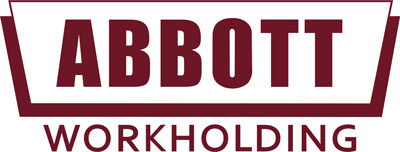Mounting Top Jaws
Safe and effective use of top jaws requires strict adherence to established safety guidelines. Consult the machine and chuck manufacturer’s operating manual for safe use and limitations. In preparation, wipe the mounting face of each master jaw, and each top jaw, clean off all dirt and chips. Inspect each top jaw before mounting to verify a good material condition.
Now carefully mate the top jaw to the master jaw, making sure of a proper fit between all components. Insert jaw mounting bolts and tighten them evenly and firmly. Use only high quality fasteners.
CAUTION: IT IS CRITICAL THAT THE BOLTS BE OF PROPER LENGTH FOR THE PARTICULAR TOP JAWS BEING USED – see illustration below.
Bolts that are TOO LONG will extend through the jaw nut, bottom out, and give the appearance of being properly torqued while not actually securing the top jaw in place. Bolts that are TOO SHORT will have insufficient thread engagement in the jaw nut, and could result in the jaw nut fracturing. Ensure that the master jaw still moves without binding.
Boring Soft Jaws
The accuracy and concentricity of the soft top jaws is established by precisely boring, or turning, the jaws while mounted on the chuck, in the gripping position. Always carry out this operation with the chuck jaws under pressure, in the same direction as they will be used. For external applications, load the chuck by gripping on a plug and bore the jaws to the dimension of the workpiece. For internal work, load the chuck by opening against a ring or band and turn the gripping surface to the dimension of the workpiece. The pre-loading operation can also be quickly and effectively done with a boring ring. Effective contact between the gripping surface of the jaws and the workpiece may be confirmed by inserting pieces of tissue paper, and then applying chuck pressure.
Always ensure that you have a balanced combination of chuck, jaws, and workpiece. Special care should be given when using oversized jaws. Consult your chuck manual to help determine the maximum safe operating speed for your application. Use of a grip-force analyzer is also recommended.

